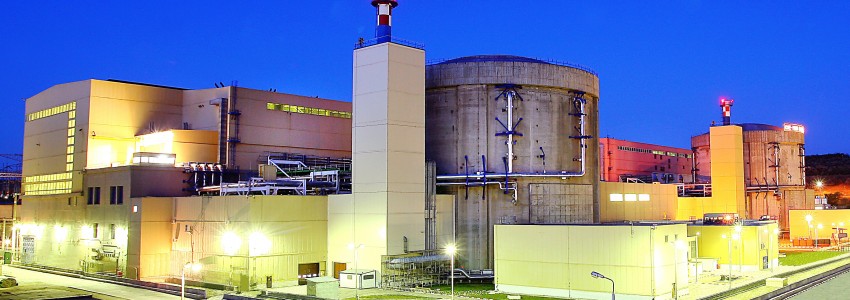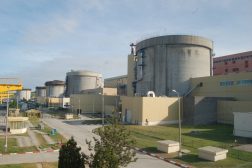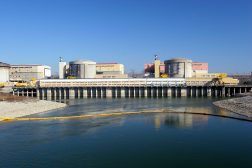The report of Professor Gordon Thompson presenting the risks the CANDU 6 type reactor would imply, also includes some statements and recommendations referring to the Cernavoda NPP’s Units 3 & 4 Project. With respect to the foregoing, SN Nuclearelectrica provides the following clarifications:
1.The first aspect the report is trying to render evident is the alleged resemblance of CANDU 6 type reactor to the Chernobyl RBMK type reactor. This is a conspicuous factual error that, from the very beginning, attaches a speculative mark to the contents of this report. The CANDU 6 type reactor is completely different from the RBMK type reactor as their features are basically distinct:
• The RBMK reactor of the Chernobyl nuclear power plant had graphite moderator and light water cooling agent and no containment, while the only one mechanical rods shutdown system had design deficiencies.
• The CANDU reactor has two different special shutdown systems, using diverse operational principles, physically separated and operating much faster than the RBMK type reactor; one emergency core cooling system for decay heat removal in the unlikely event of a loss-of-coolant accident, and a Containment Building that acts as a sealed vessel designed to confine the radioactive material.
• CANDU has no graphite moderator (the ignition of the graphite was one of the causes of the Chernobyl catastrophe), and uses heavy water as cooling agent and moderator. The large available amount of water in the reactor ensures the delay of the core melting and accordingly, more time to take the required measures.
• RBMK reactor has no separation between the emergency core cooling system (the primary heat transport system) and the main steam system (the secondary system). The CANDU reactor has a physical separation between these two systems provided by the steam generators; the primary heat transport system is placed together with the reactor inside the containment building.
These are the reasons why the probability of CANDU reactor to undergo a severe accident is by far reduced versus a RBMK reactor and is comparable with the most advanced reactors under operation worldwide. Associating the Chernobyl NPP with the Cernavoda NPP has no factual support at all.
• The CANDU type NPP at Cernavoda has a nuclear safety level meeting the current European and international requirements, which was repeatedly confirmed by experts in this field on occasion of various missions of the International Atomic Energy Agency (IAEA) Vienna, missions of the World Association of Nuclear Operators (WANO) and also by European organizations and bodies asked to perform an independent analysis of the Cernavoda NPP, which led to Romania getting the EURATOM loan necessary to continue the works on Unit 2. The same conclusion was reached by the representatives of the accident risk insurance companies that concluded insurance policies covering tens of millions of dollars for the Cernavoda NPP. It is well known that no insurance company would issue insurance policies for accidents in case of high risk activities.
• In fact, through the numerous project changes meant to meet the latest nuclear safety requirements issued by the Canadian Nuclear Regulatory Authority, the Cernavoda NPP’s Units are placed among the most modern nuclear facilities existing in the world today.
2. The two special safety Shutdown Systems, the Emergency Core Cooling System as well as the Containment System of the plant are periodically checked out as per the procedures in force. The tests prove that these systems are fit to:
– shut down and maintain the reactor shut down;
– permanently secure the nuclear fuel cooling and to confine the possible radioactive releases.
So far, no events have been recorded that might discredit the efficiency of the shutdown systems in the project data base analyses.
3. Maintaining a permanent high nuclear safety level along all the completion and operation phases of the nuclear objectives and facilities is of critical importance and represents the highest priority for SNN SA. To this end, during the designing phase, seismic studies and studies related to aircraft crash impact on the containment structural strength are performed. When a nuclear plant is designed, the results of these studies are considered, and they undergo more reviews whenever the design hypotheses or the standard requirements get stricter. For example, we can mention the review of the structure strength in case of a terrorist attack, which was decided after the events of September 11th, 2001. This action was undertaken both by the Canadian designer of CANDU 6 type reactor and by the proper Canadian authorities.
4. The authorization by the Canadian Regulatory Body of the general overhauls to be performed on Point Lepreau and Gentilly 2 Candu 6 plants, for twice extending their lifetime, proves that, in Canada, this reactor is authorizable. The same is true for the CANDU 6 reactors under operation in the Republic of Korea, one of the most developed and advanced countries in nuclear power in the world!
5. Romania is the signatory of some international agreements and treaties in fields such as: nuclear weapons non-proliferation, safe operation of nuclear facilities, safe management of radioactive wastes and spent nuclear fuel, prevention and fight against illegal trade of nuclear materials, radioactive materials, materials of nuclear interest, prevention and fight against nuclear and radiological terrorism. The medium and long-term National Strategy regarding the management of nuclear waste and spent nuclear fuel clearly defines Romania’s option with respect to the nuclear fuel cycle ending in the final repository/disposal of nuclear spent fuel.
Nuclear power does not exclude using other sources of energy for generating electricity. We need to get an optimum, balanced energy mix correlated with the domestic and import possibilities. Within this mix, nuclear energy allows us to reduce our dependence on fuel imports and offers us increased safe energy supply for the consumers at stable electricity prices. Nuclear power also allows reducing the electricity generation related pollution and greenhouse gas releases at industrial scale, responsible for global warming.










